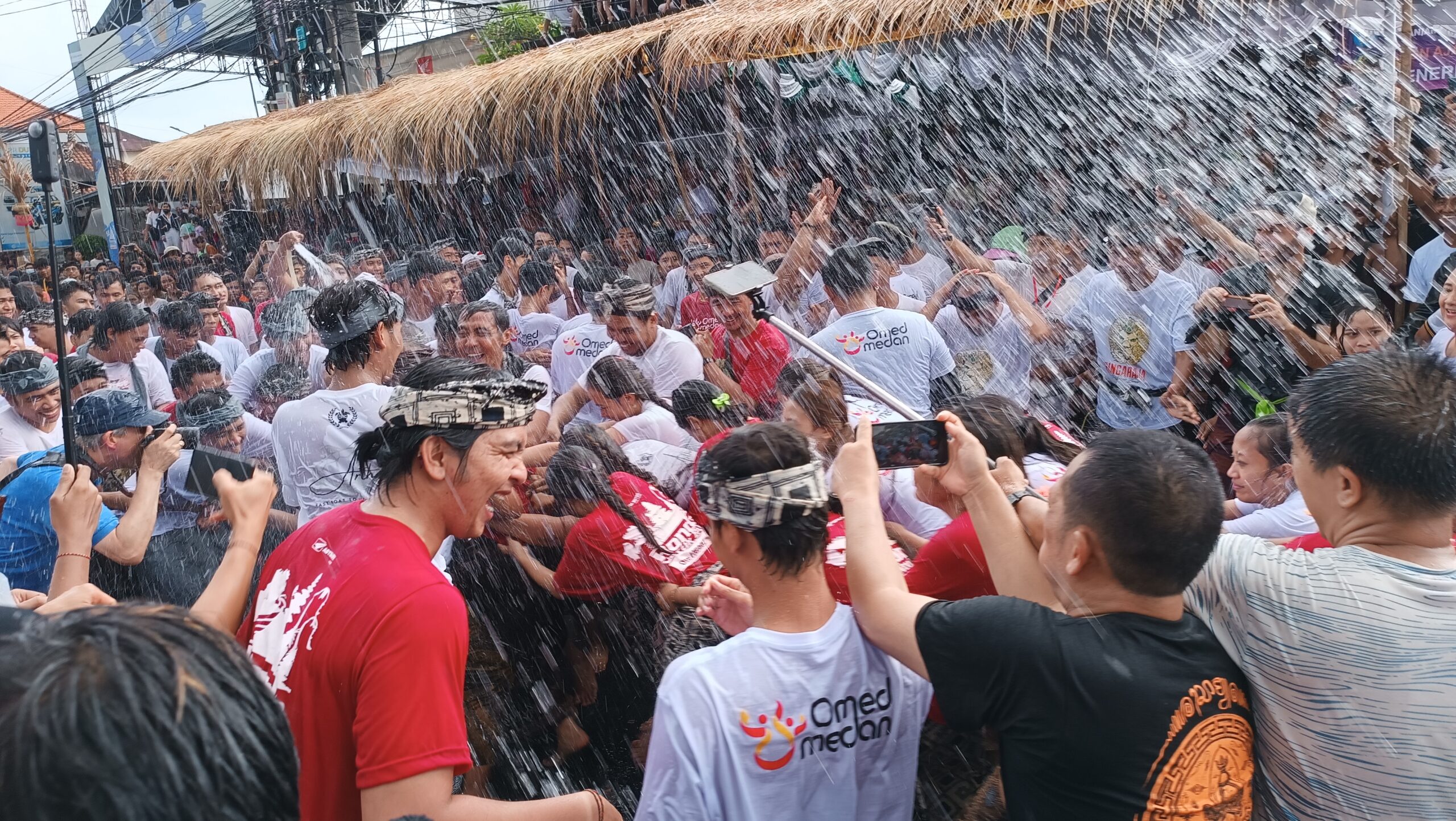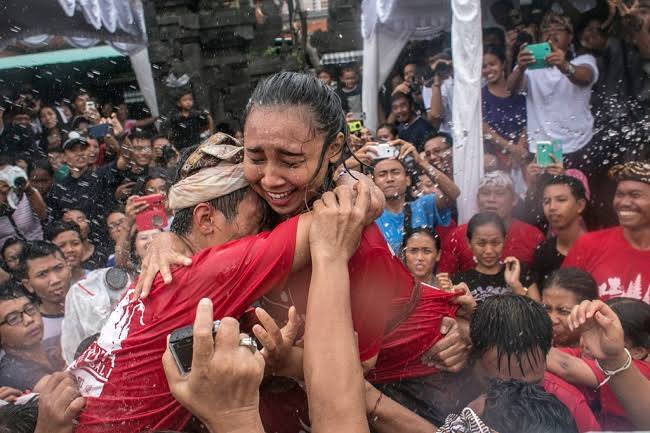Omed-Omedan, often called the “Pulling Ritual,” is a lively and unique tradition performed annually by the youth of Banjar Kaja in Sesetan, Denpasar, Bali.
This ritual takes place a day after Nyepi, during Ngembak Geni, which signifies the beginning of the Balinese Saka New Year. Rooted in local customs, the event aims to strengthen social bonds, foster unity, and maintain harmony within the community.
The term omed-omedan is derived from the Balinese word meaning “pulling.” This ritual is believed to have been practiced since the 17th century, initially as a playful gathering among the youth of the Puri Oka royal family.
According to folklore, during one Ngembak Geni, the young men and women of the palace engaged in a tugging game that evolved into hugging and pulling one another.
At the time, the commotion disturbed King Ida Bhatara Kompiang, who was bedridden due to illness. Curious about the noise, he went outside to investigate.
Strangely, after witnessing the activity, the king’s health miraculously improved. This unexpected recovery led him to declare that the ritual should be held every year after Nyepi to maintain prosperity and well-being in the community.
Throughout history, Omed-Omedan faced several obstacles. During the colonial era, the Dutch authorities attempted to ban the ritual, but the villagers defied the prohibition and continued the tradition.
Another challenge emerged in 1984 when concerns were raised about the public display of affection during the ritual.
However, shortly after the ban, a strange incident occurred: two pigs, a male and a female, began fighting violently in the middle of the village.
The battle lasted for about an hour, leading villagers to believe it was a bad omen.
Following this event, village leaders convened and decided to revive the ritual to prevent future misfortunes. Since then, Omed-Omedan has been upheld as a sacred tradition.
In the 1990s, the organization of the event shifted to the youth group Sekaa Teruna Teruni (STT), and in the 2000s, it gained recognition as the Sesetan Heritage Omed-Omedan Festival (SHOF), attracting tourists and media attention.
Unmarried youth between the ages of 17 and 30 are eligible to participate in the Omed-Omedan ritual. Typically, around 40 young men and 60 young women join the event each year.
Before the main activity begins, participants gather at the village temple for a communal prayer led by the jero pemangku (temple priest), who offers banten pejati (ritual offerings) and sprinkles holy water (tirta amerta) on the participants. The priest also distributes bija (blessed rice) as a symbol of spiritual protection.
After the prayer, the participants move to the village’s main street, where they are divided into two groups—men (teruna) and women (teruni).
The groups stand opposite each other, and upon receiving a signal from the village elder, the pulling ritual begins. The participants engage in playful tugging, hugging, and occasionally kissing, while the cheering crowd creates a festive atmosphere.
To cool down the excitement, pecalang (traditional security guards) spray water on the participants. Each round continues until one group crosses a specific boundary, marking the end of that phase.
The ritual repeats until all participants have taken part or until the event concludes in the afternoon.
While it may appear playful, Omed-Omedan holds deep cultural and spiritual meaning for the Sesetan community.
The ritual symbolizes unity, togetherness, and respect for ancestral traditions. It is also viewed as a way to welcome blessings and maintain peace in the village.
In recent decades, Omed-Omedan has gained international popularity, drawing tourists who want to witness this unusual but joyful tradition.
By preserving this ancient ritual, the people of Sesetan have successfully blended cultural heritage with modern tourism, showcasing the rich diversity of Balinese customs. (BT)





